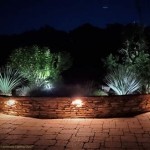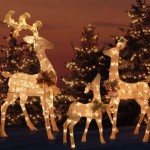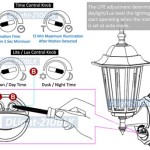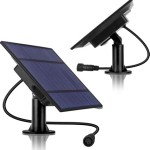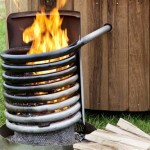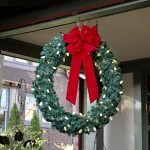Illuminating Rural Spaces: A Comprehensive Guide to Outdoor Barn Lighting
Outdoor barn lighting is a critical aspect of farm and rural property management, extending beyond mere illumination to encompass safety, security, and aesthetic appeal. Selecting and implementing appropriate lighting solutions requires a thoughtful approach, considering factors such as the barn's function, location, energy efficiency, and the overall visual impact desired. This article provides a comprehensive overview of outdoor barn lighting, exploring key considerations and offering practical guidance for achieving optimal results.
The primary function of outdoor barn lighting is to provide adequate visibility after sunset. This is essential for safely navigating the property, performing essential tasks, and deterring potential trespassers. Proper lighting significantly reduces the risk of accidents involving livestock, equipment, and personnel, particularly during early morning or late evening hours. Furthermore, well-lit barns contribute to a sense of security, making the property less vulnerable to theft or vandalism.
Beyond functionality, outdoor barn lighting can enhance the aesthetic appeal of the property. Thoughtfully positioned and designed lighting fixtures can accentuate the barn's architectural features, creating a welcoming and visually pleasing environment. The choice of lighting style, color temperature, and mounting location can significantly impact the overall ambiance and character of the rural landscape.
Key Considerations for Selecting Outdoor Barn Lighting
Choosing the right outdoor barn lighting requires careful consideration of several crucial factors. Ignoring these aspects can lead to inadequate illumination, increased energy consumption, and potential safety hazards. The following are some of the most important considerations:
1. Purpose of the Lighting: The intended use of the barn and surrounding areas should dictate the type and intensity of lighting required. For example, a barn used primarily for livestock may require different lighting than one used for equipment storage or agricultural workshops. Areas where animals are frequently handled may need brighter, more focused lighting to ensure safety during procedures like vaccinations or hoof trimming. In contrast, pathways and general outdoor areas may benefit from softer, more diffused lighting to create a welcoming atmosphere.
Consider the specific tasks performed in and around the barn. Loading and unloading materials will require brighter light in loading zones. Areas used for repairs or maintenance should have task lighting that is easily adjustable and provides focused illumination on the work area.
2. Light Source Options: Various types of light sources are available for outdoor barn lighting, each with its own advantages and disadvantages. Traditional incandescent bulbs are energy-inefficient and have a relatively short lifespan, making them a less desirable option in most cases. Halogen bulbs offer slightly better energy efficiency but still generate significant heat. Compact fluorescent lamps (CFLs) are more energy-efficient than incandescent and halogen bulbs but contain mercury and may have longer warm-up times. Light-emitting diodes (LEDs) are the most energy-efficient and longest-lasting option available, offering significant cost savings over time. LEDs are also available in a wide range of color temperatures and light output levels, providing greater flexibility in achieving the desired lighting effect. Furthermore, LEDs are typically more durable and resistant to vibration and impact, making them well-suited for outdoor applications.
Selecting the appropriate color temperature is also important. Warmer color temperatures (around 2700-3000K) create a more inviting and comfortable atmosphere, while cooler color temperatures (around 4000-5000K) provide brighter, more task-oriented lighting. For general outdoor lighting, a warmer color temperature is often preferred, while brighter, cooler temperatures may be more suitable for work areas.
3. Fixture Selection and Placement: The choice of lighting fixtures should complement the style and architecture of the barn while providing adequate illumination. Fixtures should be weather-resistant and designed for outdoor use, capable of withstanding exposure to rain, snow, and extreme temperatures. Consider the beam angle of the fixture, which determines the area covered by the light. Wide beam angles are suitable for general area lighting, while narrow beam angles are ideal for highlighting specific features or illuminating pathways.
Proper placement of lighting fixtures is crucial for achieving optimal illumination and minimizing light pollution. Mounting fixtures at appropriate heights and angles can help to direct light where it is needed most, reducing glare and preventing light from spilling into neighboring properties. Motion sensors can be used to activate lights only when needed, further reducing energy consumption and deterring potential intruders. Consider using shielded fixtures that direct light downward, minimizing light trespass and contributing to a more sustainable lighting design.
Incorporating Energy Efficiency into Barn Lighting Design
Energy efficiency is a key consideration for outdoor barn lighting, contributing to both cost savings and environmental sustainability. By adopting energy-efficient lighting technologies and implementing smart lighting controls, barn owners can significantly reduce their energy consumption and lower their operating expenses. This section explores specific strategies for maximizing energy efficiency in outdoor barn lighting systems.
1. Utilizing LED Lighting: As previously mentioned, LEDs are the most energy-efficient lighting option available. They consume significantly less energy than traditional incandescent, halogen, and CFL bulbs, while providing comparable or even superior light output. The long lifespan of LEDs also reduces maintenance costs, as they require less frequent replacement. When selecting LED fixtures, look for products with the Energy Star label, which indicates that they meet stringent energy efficiency and performance standards.
Replacing existing incandescent or halogen fixtures with LED equivalents is a simple and effective way to reduce energy consumption. The initial investment in LED lighting may be higher, but the long-term cost savings will quickly offset the initial expense. Furthermore, many utility companies offer rebates and incentives for installing energy-efficient lighting, which can further reduce the upfront cost of LED upgrades.
2. Implementing Lighting Controls: Lighting controls, such as motion sensors and timers, can significantly reduce energy consumption by turning lights off when they are not needed. Motion sensors can be used to activate lights only when movement is detected, providing illumination only when someone is present in the area. This is particularly useful for outdoor areas that are not constantly occupied, such as pathways, parking areas, and storage areas. Timers can be used to automatically turn lights on and off at predetermined times, ensuring that lights are not left on unnecessarily during daylight hours. Dusk-to-dawn sensors can also be used to automatically turn lights on at dusk and off at dawn, providing consistent and reliable lighting throughout the night.
Smart lighting systems offer even more advanced control options, allowing users to remotely control and monitor their lighting systems via a smartphone or computer. These systems can be programmed to automatically adjust lighting levels based on occupancy, time of day, or ambient light levels. They can also provide detailed energy usage data, allowing users to identify opportunities for further energy savings.
3. Optimizing Fixture Placement: Proper fixture placement can also contribute to energy efficiency by ensuring that light is directed where it is needed most. Avoid over-lighting areas by using fixtures with appropriate light output levels and beam angles. Consider using shielded fixtures that direct light downward, minimizing light trespass and preventing wasted light. By optimizing fixture placement, you can reduce the amount of light needed to achieve the desired illumination levels, resulting in lower energy consumption.
Enhancing Safety and Security with Outdoor Barn Lighting
Outdoor barn lighting plays a vital role in enhancing the safety and security of rural properties. Proper lighting can deter potential intruders, reduce the risk of accidents, and improve visibility for essential tasks. This section explores specific strategies for using outdoor barn lighting to enhance safety and security.
1. Deterring Crime and Vandalism: Well-lit properties are less attractive to criminals and vandals. Bright, consistent lighting can make it more difficult for intruders to approach the barn undetected, reducing the likelihood of theft or vandalism. Consider using motion-activated lights in areas that are particularly vulnerable, such as entryways, loading docks, and equipment storage areas. These lights will startle potential intruders and alert occupants to their presence. Ensure that lighting fixtures are securely mounted and tamper-resistant to prevent them from being damaged or disabled.
2. Preventing Accidents: Adequate lighting is essential for preventing accidents, especially in areas where livestock or equipment are present. Clearly illuminate pathways, walkways, and loading areas to ensure that people can safely navigate the property at night. Use brighter, more focused lighting in areas where animals are handled or where equipment is operated. Install lighting fixtures that provide adequate illumination without creating excessive glare, which can impair vision. Regularly inspect and maintain lighting fixtures to ensure that they are functioning properly and providing adequate illumination. Promptly replace any burnt-out bulbs or damaged fixtures.
3. Improving Visibility for Tasks: Proper lighting can significantly improve visibility for essential tasks, such as feeding animals, maintaining equipment, and performing repairs. Use task lighting that is adjustable and can be focused on the work area. Ensure that lighting fixtures are positioned to minimize shadows and provide even illumination. Consider using portable lighting options, such as work lights or flashlights, for tasks that require more focused or mobile illumination. Good visibility can help to prevent errors and accidents, improving efficiency and productivity.

American Made Indoor Outdoor Barn Lights Steel Lighting Co

Exterior Barn Lights For Colorado Retreat Inspiration Light Electric

Aqlighting 1 Light Copper Hardwired Outdoor Barn Sconce Ogn 925 Rcp The Home Depot

Why Barn Lights Popularity Is Exploding Steel Lighting Co

The Original Warehouse Gooseneck Light Outdoor Barn Lighting Exterior Lights

Choosing The Best Barn Lights For Your Modern Farmhouse Anderson Grant

Classic Gooseneck Barn Lights Lend Authenticity To New Build Inspiration Lighting Exterior Outdoor

Barn Lights Free Delivery

Motion Sensor Outdoor Lights 3 Lighting Modes Farmhouse Barn Light 2pack Black Dusk To Dawn Gooseneck Porch Fixture Wall Mount Waterproof Exterior For House Outside Garage Com

Pia Ricco 1 Light Dark Broe Outdoor Barn Sconce 2 Pack 1jay 81682 The Home Depot
Related Posts
